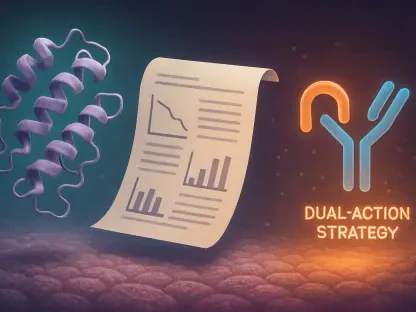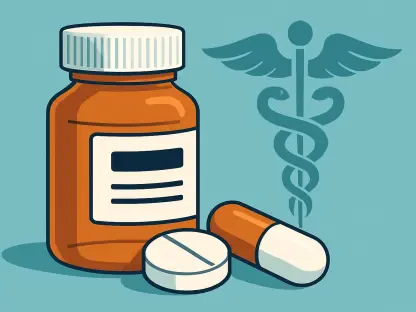Tuberculosis (TB) remains one of the deadliest infectious diseases worldwide, with drug-resistant strains posing a significant challenge to global health. Recent advancements in TB treatment, particularly for drug-resistant forms, offer new hope. This article explores the potential of new drug regimens to eliminate drug-resistant TB, based on findings from an international clinical trial led by Harvard Medical School and the endTB project.
The Global TB Crisis
The Burden of Drug-Resistant TB
Drug-resistant TB, particularly rifampin-resistant TB (RR-TB), complicates treatment efforts and increases mortality rates. Conventional TB treatments often fail against these resistant strains, necessitating the development of new therapeutic strategies. The World Health Organization (WHO) estimates that 410,000 people develop RR-TB annually, yet only 40% receive proper diagnosis and treatment. This staggering statistic highlights the global crisis posed by TB and the urgent need for new approaches to treating this resilient disease.
Traditional regimens for treating TB involve lengthy courses of toxic drugs that can lead to significant side effects and often fall short in their efficacy against drug-resistant strains. These challenges underline the necessity for innovative treatments that are not only more effective but also safer and shorter in duration. With drug-resistant TB continuing to thwart existing treatment protocols, researchers and clinicians are under immense pressure to find solutions that could potentially curb the spread of this deadly infection.
The Need for New Treatments
The emergence of drug-resistant TB underscores the urgent need for innovative treatments. Traditional therapies involve prolonged and invasive regimes with frequent side effects, making them less viable for many patients. Such treatments often result in low adherence rates, further complicating disease management and fostering the development of more resistant TB strains. This pressing issue has spurred the medical community to explore and develop more effective, shorter, and safer treatment alternatives that can combat drug-resistant TB more efficiently.
The endTB project aims to address these challenges by testing new drug combinations to revolutionize TB treatment. This groundbreaking initiative seeks to offer hope to the millions affected by TB worldwide, especially those suffering from drug-resistant forms. By incorporating newer drugs like bedaquiline and delamanid into treatment regimens, the project endeavors to minimize side effects, enhance therapeutic outcomes, and ultimately ease the global burden of TB. These advancements indicate a crucial shift in how medical professionals approach TB treatment, emphasizing the need for continued research and innovation.
The endTB Project and Its Findings
Collaborative Efforts and Trial Design
The endTB project is a collaborative effort involving Partners In Health, Médecins Sans Frontières, and Interactive Research and Development. Launched in 2017, the trial included 754 patients across seven countries: Georgia, India, Kazakhstan, Lesotho, Pakistan, Peru, and South Africa. Researchers conducted rigorous tests on five new 9-month oral regimens designed explicitly for treating RR-TB, leveraging the potential of newer medications like bedaquiline and delamanid. This multifaceted undertaking aimed to develop and validate treatment regimens that could offer a substantial improvement over existing TB therapies.
The trial’s design focused on creating shorter, all-oral treatment plans to replace the cumbersome and side-effect-ridden traditional therapies that demand daily injections. By emphasizing oral administration, the researchers sought to simplify the treatment process, improving patient adherence and overall effectiveness. The project’s inclusive approach, involving collaboration among NGOs, health ministries, and academic partners, underscores the collective global effort needed to tackle TB. The involvement of diverse stakeholders marked a significant milestone in TB treatment research, reflecting the universal commitment to finding sustainable solutions.
Promising Results
The trial’s findings, published in the New England Journal of Medicine, revealed that the new regimens achieved success rates between 85% and 90%, compared to 81% in the control group. These results demonstrate the substantial potential of the new treatments to improve outcomes for patients with drug-resistant TB. Such high success rates indicate that incorporating newer drugs like bedaquiline and delamanid into TB treatment regimens can lead to more effective, safer, and shorter courses of therapy.
The promising results from the endTB project highlight the importance of continued research and innovation in the field of TB treatment. By offering new, all-oral regimens that reduce side effects and improve adherence, these findings pave the way for more accessible and practical treatment options for patients worldwide. Furthermore, the trial’s success rates provide a robust foundation for scaling up these treatments, allowing for their broader implementation in TB-endemic regions. This advancement represents a significant leap forward in the fight against drug-resistant TB, giving new hope to millions of affected individuals.
New Drug Regimens: A Closer Look
Bedaquiline and Delamanid
Bedaquiline and delamanid are newer drugs that have shown promise in treating drug-resistant TB. Their inclusion in the new regimens has paved the way for shorter, all-oral treatments, eliminating the need for daily injections and reducing side effects. These advancements mark a significant improvement over traditional therapies, offering more convenient and effective solutions for patients. Bedaquiline works by targeting the energy production of TB bacteria, while delamanid inhibits cell wall synthesis, making them potent components in combating drug-resistant TB.
The integration of these drugs into treatment regimens is significant because it also addresses one of the major shortcomings of previous approaches: patient compliance. By eliminating the need for injections, the new regimens simplify the therapy process, potentially improving patient adherence. This is crucial in TB treatment, as adherence is vital for the success of any treatment plan. Moreover, fewer side effects mean that patients are more likely to complete their therapy without interruption, further enhancing the overall effectiveness of the regimen. This development signals a much-needed evolution in TB care, aligning treatment strategies with the realities faced by patients worldwide.
Pretomanid and Its Role
Pretomanid, another drug used under certain conditions, received emergency FDA authorization in 2019. Although not part of the endTB regimens, its recent inclusion in TB treatment highlights the evolving landscape of TB therapy. Pretomanid’s role, particularly in combination with other drugs, offers additional options for combating drug-resistant TB. By expanding the arsenal of available medications, pretomanid provides clinicians with more tools to design effective and individualized treatment plans for patients with resistant TB strains.
The importance of pretomanid in the fight against TB cannot be understated. It is part of the backdrop of a broader strategy to integrate new drugs into TB treatment regimens, ensuring that options remain versatile and adaptable to emerging challenges. As TB strains continue to evolve and develop resistance to existing medications, the inclusion of drugs like pretomanid underscores the necessity for continually updating and refining treatment protocols. The dynamic nature of TB treatment highlights the ongoing need for innovation and research, both of which are vital for staying ahead of the disease and ultimately achieving the goal of eradicating TB.
Impact on Vulnerable Populations
Inclusivity in Clinical Trials
The endTB trial’s inclusive approach is noteworthy, involving children, individuals with co-infections like HIV and Hepatitis C, and pregnant women. Traditionally excluded from clinical trials, these groups’ participation provides valuable insights into treating TB in diverse populations, ensuring that new treatments are safe and effective for all. By including a broader demographic, the endTB project contributes to a more comprehensive understanding of how the new regimens perform across various patient groups, thereby enhancing the overall applicability of the findings.
Addressing the needs of these vulnerable populations is critical in the global fight against TB. Children, for instance, have different physiological responses to medications and may face unique challenges in adhering to treatment plans. Similarly, individuals with co-infections require tailored approaches to ensure that TB treatment does not adversely affect the management of their other conditions. Pregnant women represent another crucial demographic, as TB treatment during pregnancy poses unique risks and requires careful consideration. The endTB trial’s inclusive design ensures that the new regimens are effective and safe for all these groups, making significant strides towards a more equitable healthcare landscape.
Addressing Affordability and Accessibility
Efforts to end patent exclusivity on bedaquiline have made two endTB regimen options and the WHO-recommended pretomanid-inclusive regimen available for less than $500. This cost reduction meets long-standing affordability targets set by activists, ensuring that more people can access these advanced therapies. Affordability is a critical factor in addressing the global TB crisis, as the high cost of treatment has historically been a significant barrier to care in many regions where TB is prevalent.
Making these treatments accessible at a lower cost represents a crucial step forward in the global effort to combat TB. By reducing financial barriers, more patients can receive the lifesaving medications they need, ultimately reducing the spread of the disease. Furthermore, the concerted effort to make these drugs more affordable highlights the importance of collaboration among various stakeholders, including pharmaceutical companies, policymakers, and healthcare providers. This collaborative approach is essential for ensuring that advancements in TB treatment translate into real-world benefits for those most affected by the disease, fostering a collective commitment to ending TB globally.
Future Directions in TB Treatment
WHO Endorsement and Global Adoption
In August 2024, WHO included three noninferior regimens from the endTB trial in its treatment guidance for RR-TB and multidrug-resistant TB (MDR-TB). This endorsement signifies a major step toward global adoption of these new treatments, potentially transforming TB care worldwide. The inclusion of these regimens in WHO guidelines provides a robust framework for implementing the new treatments on a broader scale, ensuring that more patients can benefit from these advancements.
WHO’s endorsement also underscores the importance of evidence-based practice in global health initiatives. By incorporating findings from the endTB trial, WHO ensures that its recommendations are grounded in rigorous scientific research, enhancing the credibility and effectiveness of the prescribed treatments. This global recognition paves the way for widespread adoption, encouraging countries to integrate the new regimens into their national TB programs. The ripple effect of this endorsement could lead to a significant reduction in the global burden of TB, offering new hope to millions of individuals affected by the disease.
Ongoing Research and Development
The endTB trial represents a substantial shift in TB treatment, emphasizing partnership-driven research involving NGOs, health ministries, and academic collaborators. Continued research and development are crucial to further refine and optimize TB therapies, ensuring that they remain effective against evolving drug-resistant strains. This collaborative approach highlights the importance of leveraging diverse expertise and resources to address complex global health challenges.
Ongoing research efforts will need to focus on several key areas, including developing new drugs, improving treatment regimens, and addressing the unique needs of various patient populations. Additionally, there is a need for continued surveillance to monitor the emergence of new drug-resistant TB strains and to adapt treatment strategies accordingly. By prioritizing research and maintaining a collaborative spirit, the global health community can make significant strides towards eradicating TB and ensuring that patients receive the best possible care.
Conclusion
Tuberculosis (TB) continues to be one of the most lethal infectious diseases around the globe, especially with the emergence of drug-resistant strains, which present a formidable challenge to global health efforts. However, recent advancements in the treatment of TB, particularly for those drug-resistant forms, are providing new optimism. Groundbreaking international clinical trials, spearheaded by Harvard Medical School in collaboration with the endTB project, have shed light on promising new drug regimens with the potential to eradicate drug-resistant TB. This article delves into these innovative treatments and their potential impact on the fight against drug-resistant tuberculosis. The findings from these studies suggest that with the right combination of medications, we could significantly reduce the burden of drug-resistant TB worldwide. These new regimens not only offer hope to patients suffering from this critical illness but also mark a significant step forward in global health efforts to curb the spread of TB and improve treatment outcomes.









